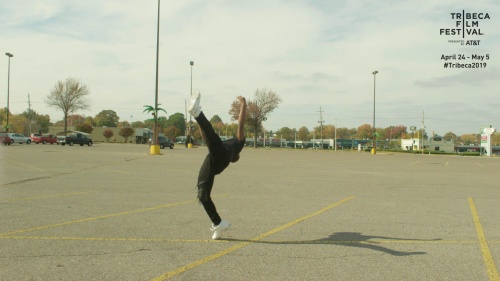|
 |
|
|
 |
 |
“Lil’ Buck: Real Swan”
Directed and Written by Louis Wallecan
France/USA/Documentary/2019/85 minutesYou might have already seen Charles “Lil’ Buck” Riley in ads for brands such as Gap, Kaporal Jeans, Diesel Jeans, Volvo and Rag and Bones, among others, with his most famous being the 2017 gravity-defying Apple AirPods commercial during the Houston Texans and New England Patriots playoff game, which had over 8 million hits. Before that, YouTube made him a household name. So you might wonder where this “overnight” sensation came from and where he got those dance moves. The captivating documentary “Lil’ Buck: Real Swan,” directed and written by Louis Wallecan, takes us on a road trip to discover Lil’ Buck’s personal journey from the mean streets of Memphis to stardom and fame, combined with a history of Jookin’. It’s quite a ride. Lil’ Buck, 30, was born in Chicago, but grew up in Memphis, Tennessee, at a time when rap and hip-hop, originating in the Bronx, NYC, were making inroads in the 1980s. Not to be outdone, Memphis, the birthplace of rock ‘n’ roll and home of the Blues, created its own rap musical sound, which became the foundation of the freestyle street dance known as Gangsta Walk, or Memphis Jookin’. It’s characterized by rhythmic bounce, sliding, gliding, spins on tiptoes and stalls (freezes), with arms, elbows and legs articulated like jelly. As Wallecan explains, Jookin’ has been around since the 1980s but lost its popularity. His goal was to present it to the world. He went around Memphis to interview all the Jookers he could and found Lil’ Buck. “He is more flexible, has fast feet and can do stuff that other people can’t do. He’s always training and getting better and better,” he said. “Our environment is built around struggle,” Lil’ Buck said. After the beloved neighborhood Crystal Palace roller skating rink closed down, beset by violence, where all the kids learned to dance, parking lots became the training ground. “We danced on concrete and got our smoothness,” he said. “Lots of parking lots we made famous. They used to be the battleground of Jookin’. Instead of murderers, we’d rather just dance it out.” Wallecan provides wonderful archival footage of the Crystal Palace’s patrons, dancing after removing their roller skates, and Lil’ Buck recreating his parking lot days. There are interviews with some veteran and younger Jookers, his family and friends, teachers and celebrities, and lots and lots of dance videos. Lil’ Buck first discovered Jookin’ from his sister when he was 12. Then he sought out the neighborhood Jookers. “I was intrigued how they could go up on pointe in their sneakers,” he recalled. “I could invert my ankles beyond a lot of people. I practiced Jookin’ day to night and walked around on my toes until my toenails came off. I could be on my toes without feeling much pain at all.” Enter his mother, who saw him hanging out with the wrong kids at school and sent him to performing arts school. Later, he received a two-year ballet scholarship at the New Ballet Ensemble. “It opened up to the world, not just the streets,” he said. “Once I started learning ballet, I started learning a lot of different ways to move my body other than the ways I was used to. I started messing with using the [ballet] positions in my style, just the way they do pirouettes and started playing with it.” He went on to perform with the company and collaborated with his instructor Katie Smythe on dancing ballet classics in his style. His career took off in 2011, after director Spike Jonze, at a fundraiser to bring the arts back into schools, used his cell phone to record his interpretive performance of "The Dying Swan" accompanied by cellist Yo-Yo Ma. Jonze uploaded the video to YouTube, and it immediately went viral; it now stands at over three million views. Since then, he’s performed with Cirque de Soleil’s “Michael Jackson: One,” French dancer/choreographer Benjamin Millepied, Janelle Monáe and Madonna, to name a few, and traveled all over the world interpreting the classics and introducing Jookin’ to a wider audience. “Everything I had to endure in the streets paid off,” he said, “keeping my drive, passion, focus and ambition for this dance style. Jookin’ is all of your life and street experience put into movement, what you feel, what you’re going through at home. All the bullshit, anger, frustration and love, and we can relate to that.”
 “Lil’ Buck Photo © & courtesy of Mathieu De Montgrand |
|
 “Lil’ Buck Photo © & courtesy of Mathieu De Montgrand |
|
|
|



